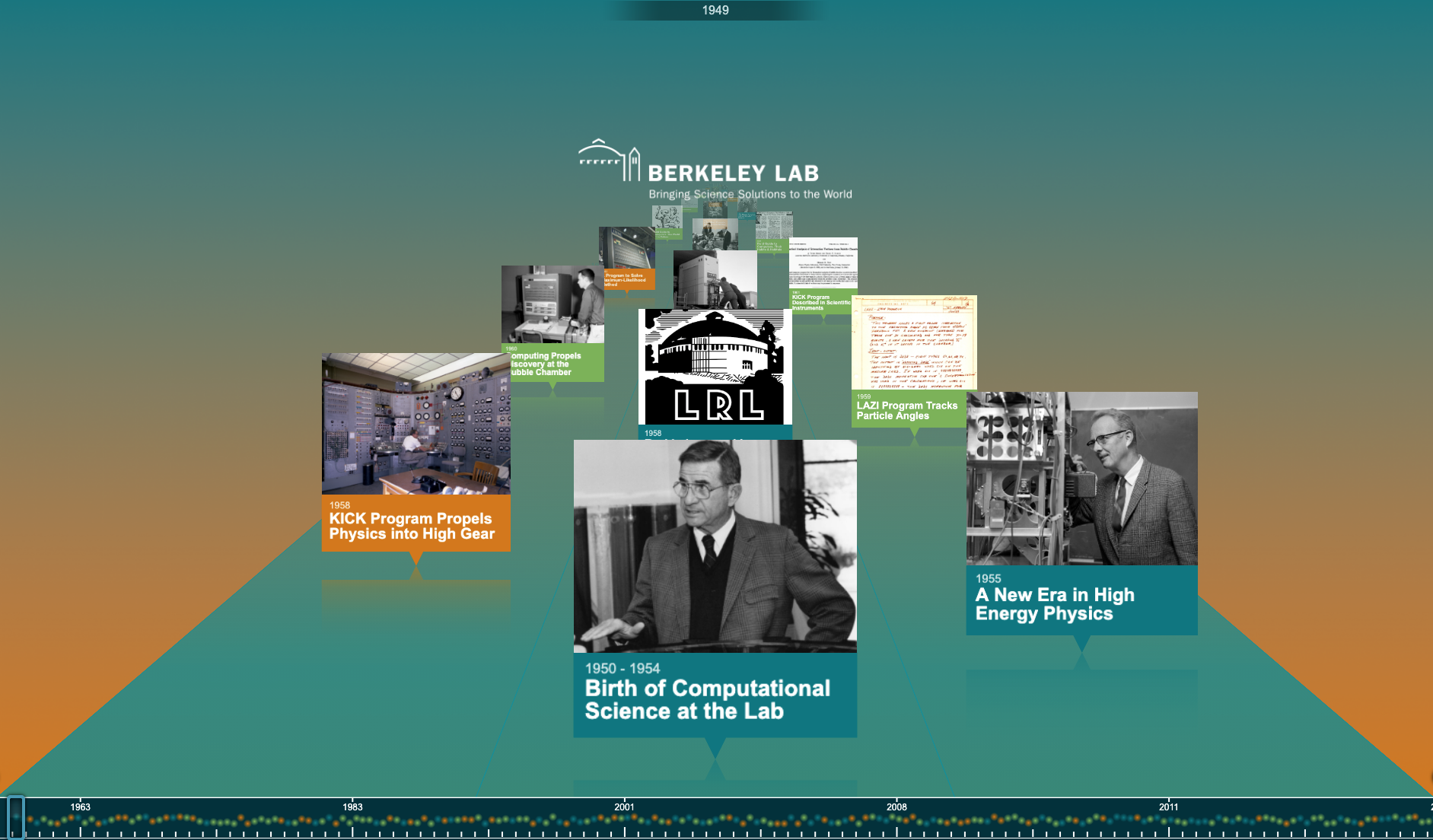Historical Timeline
A Brief History of Mathematics and Computer, Computational, and Data Science at Berkeley Lab
A sampling of more than 70 years of Berkeley Lab’s storied history in computer science, computational science, data science, and mathematics is captured in this timeline, a legacy that predates the Department of Energy’s inception.
Beginning in the 1950s and 60s, our researchers developed novel computational science techniques that led to the discovery of new particles in Luis Alvarez’s “Bubble Chamber.” They developed mathematical methods that have led to better aircraft and combustion designs, semiconductor processing, and medical imaging, among other breakthroughs. And did you know that one of the world’s first video-conferencing and live-streaming applications – the Multicast Backbone (MBONE) – was invented by Lab researchers in the 1990s?
About Berkeley Lab
Founded in 1931 on the belief that the biggest scientific challenges are best addressed by teams, Lawrence Berkeley National Laboratory and its scientists have been recognized with 16 Nobel Prizes. Today, Berkeley Lab researchers develop sustainable energy and environmental solutions, create useful new materials, advance the frontiers of computing, and probe the mysteries of life, matter, and the universe. Scientists from around the world rely on the Lab’s facilities for their own discovery science. Berkeley Lab is a multiprogram national laboratory, managed by the University of California for the U.S. Department of Energy’s Office of Science.
DOE’s Office of Science is the single largest supporter of basic research in the physical sciences in the United States, and is working to address some of the most pressing challenges of our time. For more information, please visit energy.gov/science.










